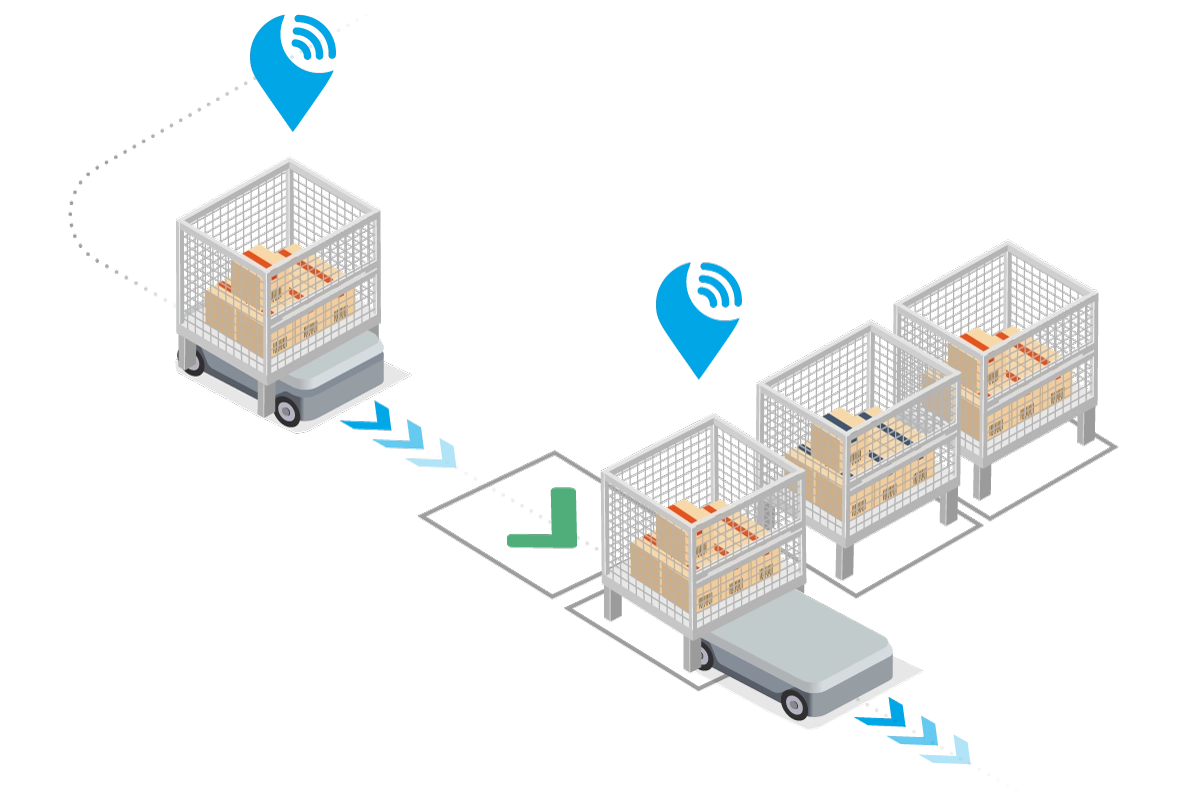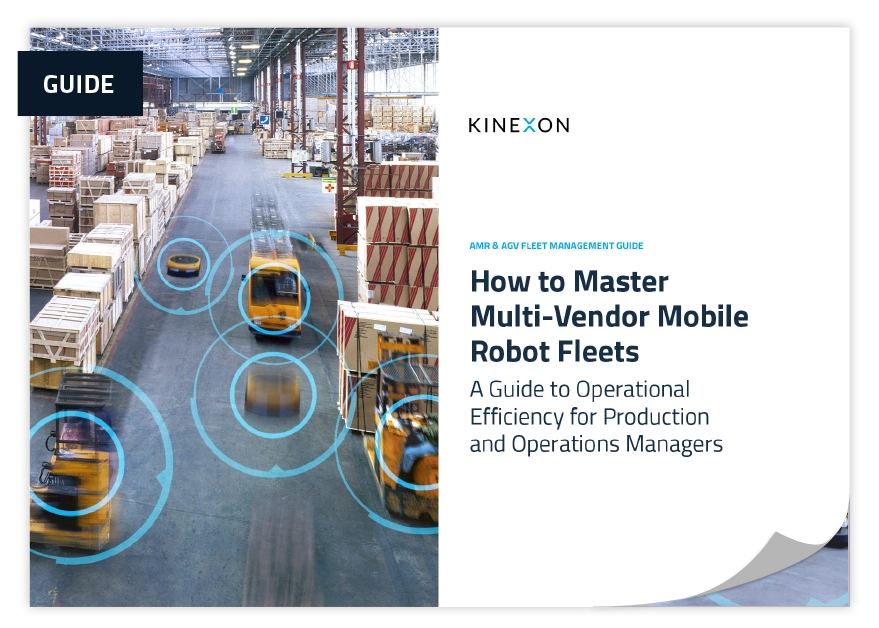Expert Interview: How to Orchestrate AMR and AGV Systems from Different Manufacturers
Learn in our expert interview how VDA 5050 standardizes AMR and AGV integration, enhancing interoperability.

Operating hybrid fleets can be a challenge when disparate systems from different types and manufacturers lack connectivity, resulting in limited interaction. That's why industry standards like the VDA 5050 are paving the way for greater interoperability between different ecosystems. In this interview, Stefan Biermeier from KINEXON, explains how companies can benefit from VDA 5050 and what role modern fleet management systems play in this.
Hybrid fleets are here to stay in intralogistics. Why do businesses use AMR and AGV systems from different manufacturers?
The main reason why businesses use different AMRs and AGVs is to leverage the unique strengths and capabilities of each system to meet their individual application or use case requirements. In fact, no vendor is able to fulfill all requirements equally at the highest possible quality level. Rather, each has its distinct strengths and specializes in certain types of robots or functions. By combining various specialized solutions according to the best-of-breed principle, companies can put together hybrid fleets tailored to their individual needs. Last but not least, a mixed fleet helps to minimize dependency on a single provider, which reduces the risks associated with vendor lock-in and provides a high level of flexibility.
What are the key challenges of managing and orchestrating hybrid fleets in intralogistics?
Managing and controlling mixed fleets is associated with a number of challenges. One of these is the lack of interoperability between the various systems. However, interoperability is essential to centralize control and automate operations. Since each AMR and AGV usually operate with proprietary control systems and protocols, operators must find their own ways to achieve seamless communication and coordination within their fleets. Another major challenge is the technical integration of the various systems. In many cases this requires a considerable amount of time and effort to make the contributing systems reliably work together. Even if the systems provide standard APIs, this is usually not a one-off project.

What role do industry standards such as the VDA 5050 play for integrating AMRs and AGVs of different types and manufacturers?
The VDA 5050 is designed to facilitate integration and interaction across system boundaries. By providing an industry standard for communication, it enables seamless interaction while simplifying and accelerating system scaling. Companies can flexibly combine VDA 5050-compatible components without having to worry about compatibility issues. In addition, the standard creates the technical foundation for centralized traffic management, using the KINEXON fleet manager, for example. Last but not least, VDA 5050 equips AMRs and AGVs with the interoperability required to be orchestrated according to best-of-breed principles. Fortunately, more and more manufacturers are converting their systems to this standard.
How do modern fleet management systems such as KINEXON's enable businesses to control, orchestrate and connect their systems efficiently?
The KINEXON Fleet Manager supports companies by providing a control center that integrates AMRs and AGVs from different manufacturers. On a technical level, standardized communication protocols such as VDA 5050 or the integration of systems via API enable seamless interoperability and efficient traffic management. The Fleet Manager also helps businesses to reduce manual processes by enabling automated monitoring and control. In addition, KINEXON supports flexible scalability and rapid integration of new robots as well as continuous optimization of workflows through advanced analytics and machine learning. This holistic approach enables companies to efficiently orchestrate and connect their mixed fleets to increase operational efficiency and productivity.
Learn more about how to orchestrate AMR and AVG systems from different manufacturers in our complimentary guide for production and operations managers!

More Resources
Stay Up to Date
Subscribe to our newsletter and stay connected. You can unsubscribe at any time.
Ready to automate your industrial operations?
Schedule a meeting with our experts to connect and automate your operations.
Get in touch